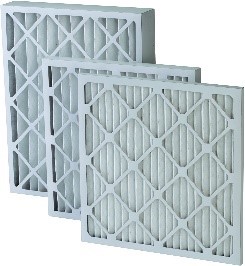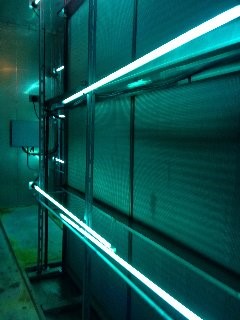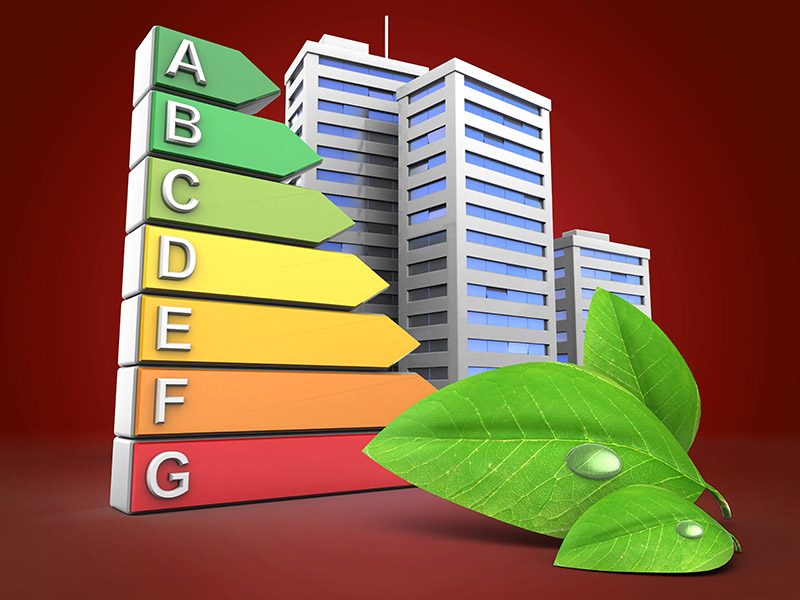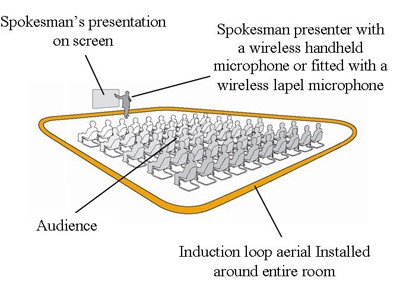New York City’s Climate Mobilization Act
October 11, 2019 Newsroom
How Does New York City’s Climate Mobilization Act Impact Building Owners and Developers?
By Harrison Young, Collado Engineering
Leading up to Earth Day 2019, the Climate Mobilization Act passed New York City Council in a bold effort to combat climate change at the local level. Within this act, there are multiple pieces of industry-altering legislation that establish requirements and create opportunities for NYC real estate o wners and developers.
wners and developers.
In conjunction with New York State’s 80/50 goal – to reduce greenhouse gas emissions levels by 80% by 2050 in relation to emission levels in 2005 – the components of this act will impose limitations on both new and existing buildings to curtail emissions. According to the New York City Mayor’s Office of Long Term Planning and Sustainability, buildings are responsible for the overwhelming majority of New York City’s greenhouse gas emissions. With almost three-quarters of the city’s emissions generated by buildings, it is no surprise that buildings are going to be heavily targeted under the upcoming emissions goals.
The Real Estate Board of New York estimates that the investment needed to reach these goals could be as high as $4 billion. This expenditure will mostly fall on building owners and tenants. The legislation under this act is in place to provide a roadmap and mechanisms for NYC’s real estate industry to meet the State’s ambitious 80/50 goal.
Key Pieces of Legislation Within the Climate Mobilization Act
Local Law 97 – Reducing Greenhouse Gas Emissions
Local Law 97 is the most ambitious climate legislation for buildings enacted by any city in the world. The local law establishes a system of calculating greenhouse gas emission equivalents for buildings larger than 25,000 square feet or two or more buildings on the same tax lot which together exceed 50,000 square feet. Beginning in 2024, the local law initiates emission limit enforcement. From there, every 5 years will bring tighter emissions limits. Buildings that do not comply will be subject to fines of $268 per ton of CO2 above the limit. For many buildings, this could equate to tens of thousands of dollars per year in fines. Responsible building owners can avoid this with a combination of tangible energy efficiency upgrades or taking part in a carbon offset, carbon trading, or renewable energy credit program.
Local Law 95 – Adjustment to the Energy Grading Scale
 Adjustments are to be implemented to the ENERGY STAR letter grading and benchmarking system previously established under NYC Local Laws 33 and 84. Similar to the Health Department’s lettered restaurant grades, qualified buildings will receive an A, B, C, D, F, or N for their standing in relation to energy performance metrics. The criteria behind these grades is based on a percentile ranking of how a given building performs in relation to comparable buildings. These grades are to be displayed at all public entrances. In a competitive real estate market, this displayed energy grade creates another way for a building to gain an edge on competing properties. Many buildings have already been required to track their grades. Now, buildings will have to operate at a level of lower energy usage in reference to their peers to obtain a respectable energy efficiency grade.
Adjustments are to be implemented to the ENERGY STAR letter grading and benchmarking system previously established under NYC Local Laws 33 and 84. Similar to the Health Department’s lettered restaurant grades, qualified buildings will receive an A, B, C, D, F, or N for their standing in relation to energy performance metrics. The criteria behind these grades is based on a percentile ranking of how a given building performs in relation to comparable buildings. These grades are to be displayed at all public entrances. In a competitive real estate market, this displayed energy grade creates another way for a building to gain an edge on competing properties. Many buildings have already been required to track their grades. Now, buildings will have to operate at a level of lower energy usage in reference to their peers to obtain a respectable energy efficiency grade.
Local Law 96 – PACE Financing Program
Property Assessed Clean Energy (PACE) financing will be a key element to ensure that building upgrades make economic sense. To cover the high upfront costs of these upgrades, financing – up to 100% of costs – can be paid back through the property tax bill of a building. This long-term financing mechanism, provided by New York State, is typically structured so that annual energy cost savings are equal to or more than the loan payments. PACE financing aims to bring immediate cost savings for energy efficiency upgrades and provides a path for making the investment financially feasible.
What Should Existing Building Owners Do?
Older buildings will also be subject to meeting these pieces of legislation. When many of these buildings were constructed, little priority may have been given to energy usage. If you own one of these existing buildings, the first step is to measure how your building is currently performing. With this knowledge, a plan can be developed to ultimately lower its overall energy usage. Although your building may meet the first round of emissions limits, more stringent emission limits are slated to follow in 2030 and every 5 years after. Developing a forward-thinking plan will promote a cost effective and successful implementation of energy efficiency upgrades leading up to 2024, and beyond. Whether it’s employing basic approaches (updating equipment, insulating pipes, weatherization, calibration, and sequencing) or more in-depth approaches (full-gut renovation or renewable energy deployment), a well advised and thought out plan will be invaluable moving forward.
If you would like to find out how your building is currently performing, contact Collado Engineering.
What Should Developers Do?
If you plan to start construction on a new building or renovate an existing building, energy efficiency and minimizing carbon emissions must be designated a priority early in the design phase. Even though a building may meet code at the time of construction, significant upgrades may soon be needed to comply with future emissions limits. If thoughtful consideration is given to the building practices used, costly upgrades and/or fines can be avoided altogether. Energy modeling will be vital to understanding how a building will work as a system of various trades and components. We highly recommend that you contact your design professionals now so that energy efficiency measures can be implemented in a seamless and effective fashion.
Due to the scale of the landscape that the Climate Mobilization Act intends to transform, this package of legislation is sure to disrupt one of the most prolific real estate markets in the world. For anyone owning or constructing a building in NYC, knowledge of the laws and their implications is imperative, and the time to act on this is now. An experienced MEP engineering firm with qualified professionals, including Certified Energy Auditors, can evaluate your building’s systems and determine the best steps to protect your investment in this ever-changing real estate landscape.



 Filtration: Most existing HVAC systems already have filters installed, so ensuring that these are being changed regularly and properly is important. Upgrading filters to higher MERV or HEPA levels with higher entrapment efficiencies for smaller particles can improve contaminant removal. However, it is important to understand the performance capabilities of the system before installing. Adding higher rated filters increases pressure drop through the system, which can result in poor airflow and may require modifications to the filter racks or fan operating parameters. Bi-polar ionization can be used to enhance filtration by generating ions that attach to contaminants, making them larger and more susceptible to filter capture, thus allowing for the use of lower filter ratings and avoiding airflow issues. Stand-alone filtration or ionizing units are effective for elevators.
Filtration: Most existing HVAC systems already have filters installed, so ensuring that these are being changed regularly and properly is important. Upgrading filters to higher MERV or HEPA levels with higher entrapment efficiencies for smaller particles can improve contaminant removal. However, it is important to understand the performance capabilities of the system before installing. Adding higher rated filters increases pressure drop through the system, which can result in poor airflow and may require modifications to the filter racks or fan operating parameters. Bi-polar ionization can be used to enhance filtration by generating ions that attach to contaminants, making them larger and more susceptible to filter capture, thus allowing for the use of lower filter ratings and avoiding airflow issues. Stand-alone filtration or ionizing units are effective for elevators. Elimination: UV-C light is effective at inactivating many different pathogens such that they cannot replicate. While this approach is highly effective in static operations such as air coil sterilization and surface disinfection, there is a misconception that it will effectively deactivate viruses in a moving air stream. In most applications, the necessary modifications to provide the proper dosage to moving air in a single pass to deactivate all the entrained virus would be extensive and costly. Proper design of a UV-C system is necessary to ensure adequate dosages for the intended use of the installation.
Elimination: UV-C light is effective at inactivating many different pathogens such that they cannot replicate. While this approach is highly effective in static operations such as air coil sterilization and surface disinfection, there is a misconception that it will effectively deactivate viruses in a moving air stream. In most applications, the necessary modifications to provide the proper dosage to moving air in a single pass to deactivate all the entrained virus would be extensive and costly. Proper design of a UV-C system is necessary to ensure adequate dosages for the intended use of the installation.
 wners and developers.
wners and developers. Adjustments are to be implemented to the ENERGY STAR letter grading and benchmarking system previously established under NYC Local Laws 33 and 84. Similar to the Health Department’s lettered restaurant grades, qualified buildings will receive an A, B, C, D, F, or N for their standing in relation to energy performance metrics. The criteria behind these grades is based on a percentile ranking of how a given building performs in relation to comparable buildings. These grades are to be displayed at all public entrances. In a competitive real estate market, this displayed energy grade creates another way for a building to gain an edge on competing properties. Many buildings have already been required to track their grades. Now, buildings will have to operate at a level of lower energy usage in reference to their peers to obtain a respectable energy efficiency grade.
Adjustments are to be implemented to the ENERGY STAR letter grading and benchmarking system previously established under NYC Local Laws 33 and 84. Similar to the Health Department’s lettered restaurant grades, qualified buildings will receive an A, B, C, D, F, or N for their standing in relation to energy performance metrics. The criteria behind these grades is based on a percentile ranking of how a given building performs in relation to comparable buildings. These grades are to be displayed at all public entrances. In a competitive real estate market, this displayed energy grade creates another way for a building to gain an edge on competing properties. Many buildings have already been required to track their grades. Now, buildings will have to operate at a level of lower energy usage in reference to their peers to obtain a respectable energy efficiency grade.






